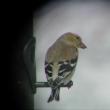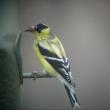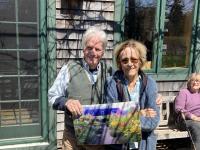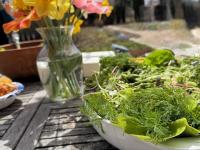Striking Gold, a Sure Sign of Spring
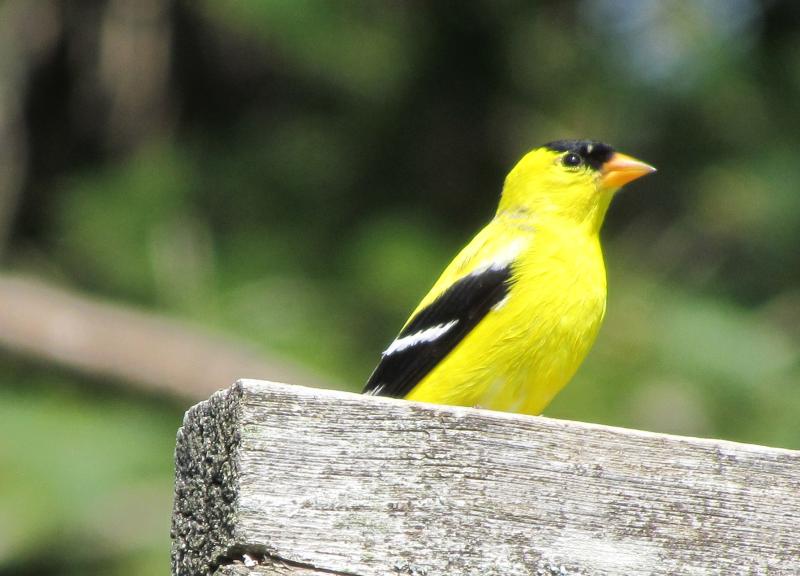 Male American goldfinch in breeding plumage, living up to its showy name. Courtesy of Jeff Wells
Male American goldfinch in breeding plumage, living up to its showy name. Courtesy of Jeff Wells
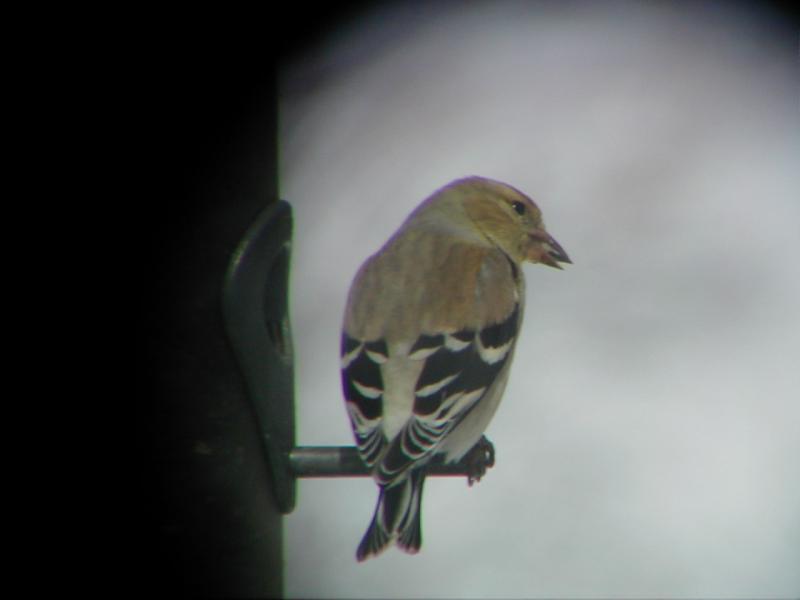 The more demure plumage of the American goldfinch in winter. Courtesy of Jeff Wells
The more demure plumage of the American goldfinch in winter. Courtesy of Jeff Wells
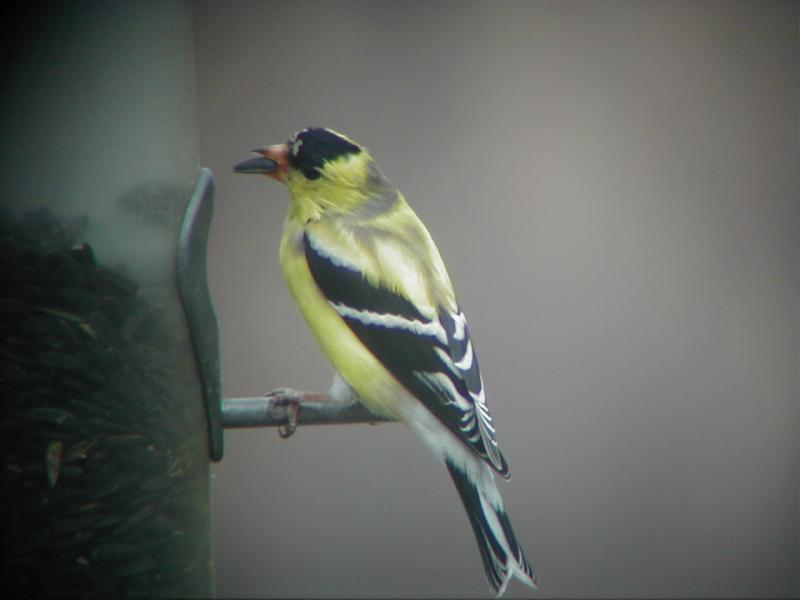 Male American goldfinches begin molting into their bright yellow breeding plumage as early as late February and early March, a sure sign of spring. Courtesy of Jeff Wells
Male American goldfinches begin molting into their bright yellow breeding plumage as early as late February and early March, a sure sign of spring. Courtesy of Jeff Wells
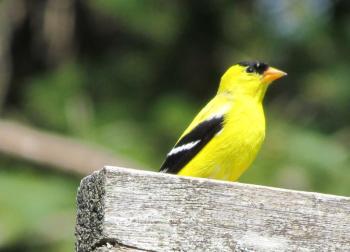 Male American goldfinch in breeding plumage, living up to its showy name. Courtesy of Jeff Wells
Male American goldfinch in breeding plumage, living up to its showy name. Courtesy of Jeff Wells
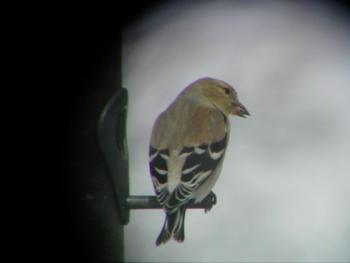 The more demure plumage of the American goldfinch in winter. Courtesy of Jeff Wells
The more demure plumage of the American goldfinch in winter. Courtesy of Jeff Wells
 Male American goldfinches begin molting into their bright yellow breeding plumage as early as late February and early March, a sure sign of spring. Courtesy of Jeff Wells
Male American goldfinches begin molting into their bright yellow breeding plumage as early as late February and early March, a sure sign of spring. Courtesy of Jeff Wells
What’s your favorite sign of spring? Is it that first crocus pushing up through the last of the melting snow? Maybe it’s the gradually but refreshingly longer days.
For us, one of the most definitive indications that spring is on its way is when those little dull olive-green birds that have been busying about at our sunflower and thistle feeders all winter start turning to gold. The change is gradual but so striking, one has to wonder if it was the inspiration for the birds’ name: goldfinch.
There are several species of goldfinches in North America, including the Lesser goldfinch and Lawrence’s goldfinch. Neither of these are found in Maine; we have just the American goldfinch. Some individual birds start earning that name as soon as late February and early March, bringing hope to anyone yearning for the sun and warmth of spring and summer.
While breeding males turn to gold in spring, females and immatures remain a duller brown, though all show off bold black wings with whitish wing bars. Their year-round range extends through all but northern Maine. They breed from southern Canada across two-thirds of the U.S. American goldfinches winter through as far north to southern Canada and west down into eastern Mexico.
Although American goldfinches begin their spring molt early, they don’t breed until June or July—later than many species of North American birds. This is timed to the plants they rely upon to build their nests and feed their young. If you’ve seen goldfinches alighting on milkweed and thistle and going to town on them, this is why! Food and shelter, two of the great driving forces of survival.
American goldfinches maintain a strict vegetarian diet. One bonus: it helps ensure nestlings’ success in nests parasitized by brown-headed cowbirds. In most cases, brown-headed cowbird babies outcompete the young of their host species. Researchers have found that nestling cowbirds are not able to live off the all-seed meals American goldfinches feed their young!
American goldfinches are found in just about every habitat, all but deep in the forest. They typically lay between two and seven bluish-white eggs in an open-cup nest placed rather high in a shrub. The nests are made of plant fibers and tightly lined with milkweed or thistle. Incubation takes about two weeks.
As spring advances and the goldfinches begin to live up to their shiny name, you can hear them make a variety of vocalizations. Their songs are emphatic, long warbles of notes and phrases. They continue to learn these seemingly complicated song patterns throughout their lives. We have a particular affinity for their call, which they frequently give while flying: a soft, cheery, “potato chip, potato chip.” In fact, when introducing children or new birders to the species, we like to refer to it as the “potato chip bird” a memorable way to remember the American goldfinch.
As you observe the goldfinches turning to the brilliant yellow of the warmer seasons, consider this: they’ll be molting all over again in late summer! American goldfinches, unlike the other goldfinches, molt twice a year. To us, this adds mystery to a species so common we’re apt to see them just about anywhere. It also helps us appreciate the bright colors of their breeding plumage, since all too soon, it will again slip away, like summer itself.
Jeffrey V. Wells, Ph.D., is a Fellow of the Cornell Lab of Ornithology and Vice President of Boreal Conservation for National Audubon. Dr. Wells is one of the nation's leading bird experts and conservation biologists. He is a coauthor of the seminal “Birds of Maine” book and author of the “Birder’s Conservation Handbook.” His grandfather, the late John Chase, was a columnist for the Boothbay Register for many years. Allison Childs Wells, formerly of the Cornell Lab of Ornithology, is a senior director at the Natural Resources Council of Maine, a nonprofit membership organization working statewide to protect the nature of Maine. Both are widely published natural history writers and are the authors of the popular books, “Maine’s Favorite Birds” (Tilbury House) and “Birds of Aruba, Bonaire, and Curaçao: A Site and Field Guide,” (Cornell University Press).





